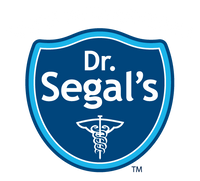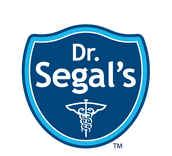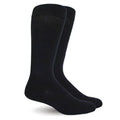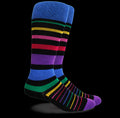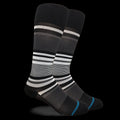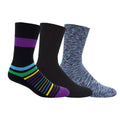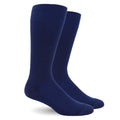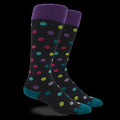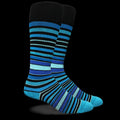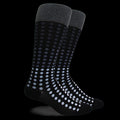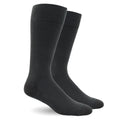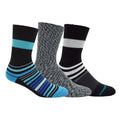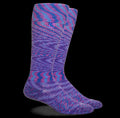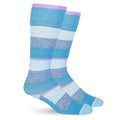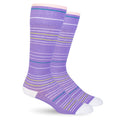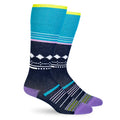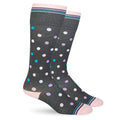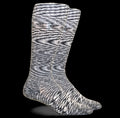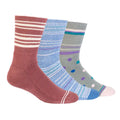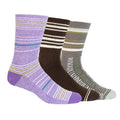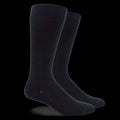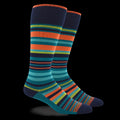Contrary to popular belief, vein diseases can affect people of any age and gender, and does not start with the appearance of varicose or spider veins. Possible signs of an underlying venous disorders start with tired, achy legs and swelling in your feet and ankles.
Some Venous Disorders are: Chronic venous insufficiency, venous ulcer, and Varicose Veins - all of which benefit from graduated compression therapy

Chronic Venous Insufficiency (CVI)
CVI occurs when the valves in your leg veins are damaged and allow blood to leak backward (poor circulation). The result is that blood ‘pools’ or collects in the lower leg.
Symptoms of CVI:
- Swelling the ankles and feet
- Tight calves
- Tired, heavy, restless or achy legs
- Pain while walking or shortly after stopping
- Flaky or itchy skin on legs or feet
- Skin colour and texture changes
- Non-healing wounds
Venous Ulcer
A venous leg ulcer is one of the most serious complications of CVI.
A venous skin ulcer is a shallow wound that occurs when the leg veins don't return blood back toward the heart the way they should. This is caused by venous insufficiency.
Venous skin ulcers are slow to heal and often come back if you don’t take steps to prevent them.
Signs & Symptoms of Ulcers:
- The first sign of a venous skin ulcer is skin that turns dark red or purple over the area where the blood is leaking out of the vein. The skin also may become thick, dry, and itchy.
- Without treatment, an ulcer may form. The ulcer may be painful. You also may have swollen and achy legs.
- If the wound becomes infected, the infection may cause an odor, and pus may drain from the wound. The area around the wound also may be more tender and red.
- The blood may leak out of the vein and into the surrounding tissue. This can lead to a breakdown of the tissue and an ulcer.
- These ulcers usually form on the sides of the lower leg, above the ankle and below the calf.
Treatment for Venous Ulcers:
- The first step to treating venous leg ulcer is controlling the infection and healing the wound.
- Once the wound is healed, wearing compression socks helps manage the pain and swelling.
- The recurrence rate of a venous ulcer after treatment approached 70 percent in one study - so it is important that patients continue to wear compression socks for life.
- While medical compression levels are recommended for ulcer management, wearing some compression is better than no compression. Our 15-20mmHg Everyday collection helps with compliance as it is easy to put on.
Varicose Veins
What are Varicose Veins?
- Varicose veins are superficial veins that have become enlarged or twisted
- Varicose veins are one of the most common conditions of venous disease in the legs.
- According to the Society for Vascular Surgery, 35% of people in the United States have Varicose Veins. While it is more prevalent in women, men are also affected and incidence rates increase with age for both sexes.
- Spider veins are a smaller version of varicose veins that can appear as red or blue lines in a webbed pattern.
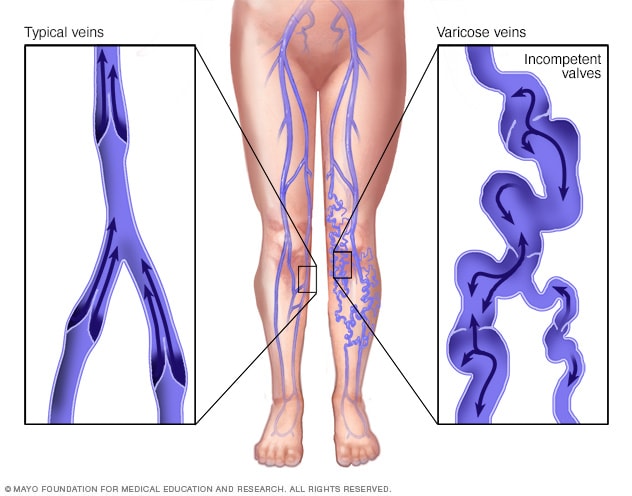
Signs & Symptoms:
- Aching, heavy legs
- Ankle swelling, especially in the evening
- Appearance of spider veins
- A brownish-yellow shiny skin discoloration near the affected veins
- Redness, dryness, and itchiness of areas of skin
- Feeling of restless legs
Causes for Varicose Veins:
The underlying cause for vein diseases including varicose veins involves weak or damaged valves in the veins. Excess sitting and standing results in the pressure building up inside the veins. Gravity adds external pressure by working against blood return. Over time, both these pressures weaken the valves inside the veins and result in varicose and spider veins.
Risk Factors Include:
- Genetics - Family History of Vein Disease
- Hormones – Birth Control Pill, Pregnancy, Hormone Replacement Therapy
- Prolonged Sitting or Standing
- Trauma or Surgery
- Sedentary Lifestyle
- Pregnancy
- Long Distance Travel
- Obesity
- Smoking
Are there any complications with Varicose Veins?
While in most cases varicose and spider veins pose merely a cosmetic issue, painful varicose veins can be signs of more serious problems - especially if left untreated. Some complications may include:
- Pain, tenderness, heaviness, inability to walk or stand for long hours
- Skin ulcers - varicose veins cause swelling, which over time can result in tissue that takes longer to heal from minor injuries
- Severe bleeding from minor trauma as there is a larger than normal amount of blood in varicose veins
- Blood is more likely to clot in a varicose vein
- People who develop blood clots in varicose veins, are at risk to develop Deep Vein Thrombosis (DVT). New research found varicose vein patients had about a 5 times greater risk of developing DVT than those who don’t.
*If you have varicose veins and they are painful, please talk to your doctor.
Remedies for Varicose Vein:
- Staying active and exercising regularly as this helps your blood circulation
- Elevating the legs often provides temporary symptom relief. For example, lie down and then prop up your legs with pillows
- Use of graduated compression socks or stockings
- Medical and surgical procedures including sclerotherapy, laser surgery, and vein stripping
How Compression therapy benefits varicose veins and other vein diseases?
- Wearing compression socks daily can help prevent and relieve varicose veins by increasing circulation in the lower legs.
- Anyone who stands or sits for long periods of time can increase leg energy, reduce swelling and reduce the incidence of spider and varicose veins simply by wearing compression socks.
- The basic role of compression therapy is to push blood from the surface veins into the deep veins and back up to the heart. This effectively reduces the pressure in the vein which:
- decreases swelling in the feet, ankles and legs
- provides relief from pain and achiness in the lower legs.
- There is often recurrence following medical procedures such as sclerotherapy, laser surgery, and vein stripping. As such, it is important to use compression socks as a maintenance plan after treatment or surgery to prevent re-appearance.
Dr. Segal's Compression Socks promote leg health and reduce moderate leg pain associated with varicose veins and other venous diseases. Our socks are available in several fashionable colors and prints to match your style without compromising on effectiveness. Browse our medical compression socks for men and women (20-30 mmHg) to treat moderate swelling, active ulcers, chronic venous insufficiency, painful varicose veins, and post sclerotherapy treatment. Please talk to your physician to see if this level of compression is right for you.
For prevention of varicose veins and treating mild symptoms, our everyday men and women’s collection (15-20mmHg) is ideal.

